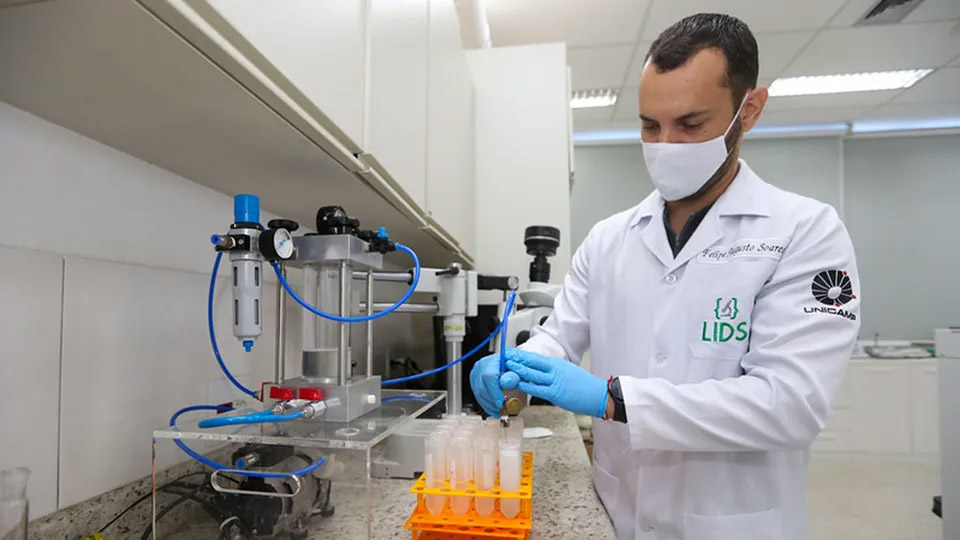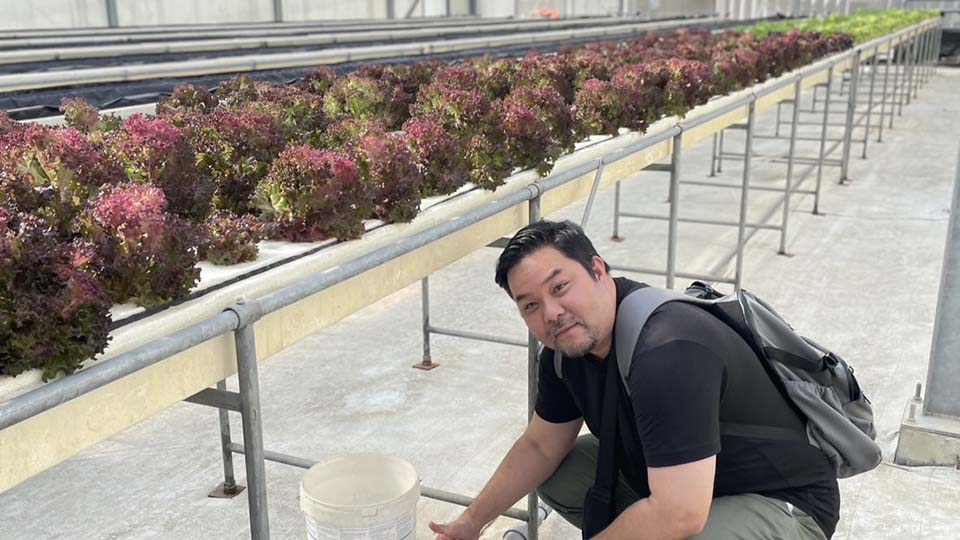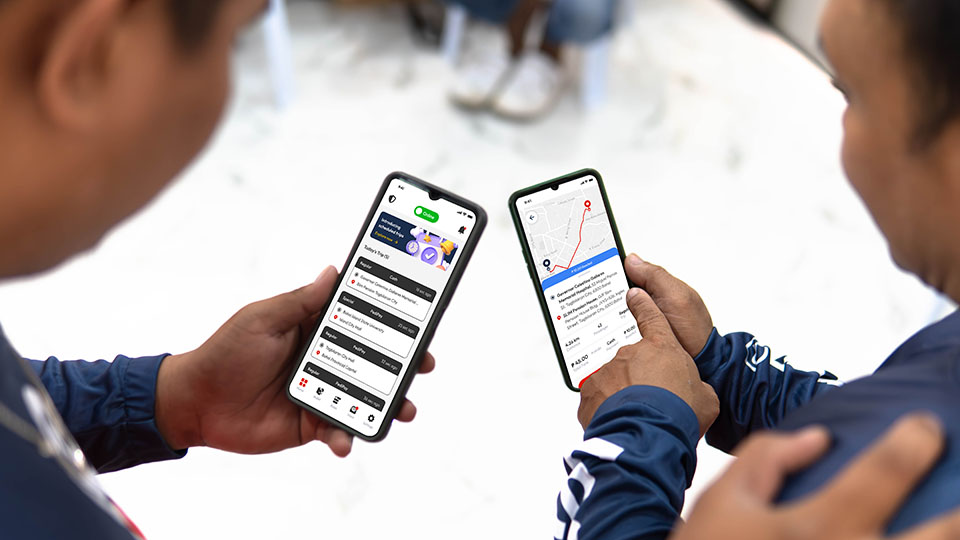Background

The Western Ghats, the home of the Kani tribe (Photo: Alosh Bennett)
Nestled in the tropical forests of the Agasthyamalai hills of the Western Ghats, a mountain range in Kerala state, India, live the indigenous Kani tribe, traditionally a nomadic people with a population of almost 25,000. In December 1987, Dr. Palpu Pushpangadan, then director of the Jawaharlal Nehru Tropical Botanical Garden and Research Institute (JNTBGRI) in Kerala, was leading a team from the All India Coordinated Research Project on Ethnobiology (AICRPE) on an ethnobotanical expedition to the Western Ghats.
Knowing that the Kani knew the area better than anyone, Dr. Pushpangadan employed some of them as guides. While traversing through the rough terrain, the team was surprised that after several hours their Kani guides did not feel tired, while they themselves were constantly feeling fatigued. Curious as to why, the observed their guides and saw them continuously munching black fruits of some plants. Seeing their exhaustion, the Kani guides offered some of the fruit to the AICRPE team. Upon eating the fruit, the team immediately felt full of energy and vitality.
The Kani have a rich tradition of using wild plants found in the region for health reasons, and their tribal physicians – known as Plathi – are the exclusive holders of the traditional medicinal knowledge of the tribe. According to Kani tribal customs, only the Plathi have the right to transfer and disseminate their traditional medicinal knowledge. Because of this, the Kani guides were reticent to share with the AICRPE team the source of the revitalizing fruit. However after a great deal of pressure, the Kani led the team to a plant known locally as “arogyapacha” (known scientifically as trichopus zeylanicus ssp. Travancoricus).
Invention
With first-hand experience of the medicinal benefits of arogyapacha, Dr. Pushpangadan knew that the effect of the plant’s berries was unusual, and that it had significant sales potential if it proved to be safe. He and his team of scientists took the plant back to JNTBGRI’s research facilities and began to analyze it through a multitude of chemical and pharmacological tests. Their research over eight years discovered that not only did the plant (particularly the fruit and leaves) have anti-stress and immune-stimulating properties, but it also boosts stamina, relieves fatigue, helps control tumors and activates the body’s natural defenses and cellular immune system.
After seven years, JNTBGRI’s research isolated twelve active chemical compounds in the plant that yielded the effects they experienced. The traditional way in which the Kani used arogyapacha was to eat its fruit. JNTBGRI discovered that crushing the plant’s leaves was the most effective way to get to the twelve compounds. These chemicals were then combined with three other plants and TBGRI produced a scientifically verified and standardized herbal formulation for its reproduction. JNTBGRI named this formulation “Jeevani,” which means “giver of life.” The product comes in granules and is mixed with hot water or milk.

The arogyapaacha plant from which the Jevaani
drug was developed and subsequently patented by
the Indian research institute JNTBGRI
(Photo: WIPO Publication 769E)
Research and Development
With a standardized formulation in hand, JNTBGRI continued its research and development (R&D) program on Jeevani, particularly through clinical trials in which it was administered orally to one hundred human subjects in studies involving either healthy or unhealthy individuals. The research focused on determining the ability of these people to withstand adverse conditions (such as an increased work load), the quality of work completed under stress, athletic performance, any increase in mental alertness and overall work output.
Results of the clinical trials were very successful and Jeevani was found to exert favorable effects in a number of situations. JNTBGRI’s research scientifically demonstrated the important medicinal benefits of the arogyapacha plant, and proved that when used alone or combined with other ingredients, it can be more effective and safer than ginseng.
JNTBGRI has applied the success of Jeevani to other R&D projects and it believes that the project is a model for bringing beneficial traditional medicinal plants to the world market. “Our purpose here is to make sure that these valuable plants remain available, and that science into their medicinal uses continues,” Dr. Rajasekharan, head of JNTBGRI’s ethnomedicine division, explained. “We are dedicated to this work. We hope to initiate more work like the Jeevani project, in time developing other medicines. There are so many valuable plants that can help people with common health problems.”
Patents
Dr. Pushpangadan and his research team realized that without intellectual property (IP) protection, they would not be able to generate much revenue from Jeevani. With an interest in also helping the Kani people through a benefit sharing agreement, Dr. Pushpangadan also knew that no IP protection also meant there would be no financial gains for the Kani people. IP protection was thus essential.
Therefore, after successfully finishing R&D and further refining Jeevani, in cooperation with the Council of Scientific and Industrial Research (CSIR), a premier Indian R&D organization, JNTBGRI decided to make a patent application in 1994 with the Office of the Controller General of Patents, Designs & Trademarks of India (IP India) for the manufacturing process of an herbal sports medicine based on the compounds isolated from arogyapacha. In 2007, Dr. Pushpangadan became Director General of the Amity Institute for Herbal & Biotech Products Development (AIHBPD) at Amity University in Uttar Pradesh. After the original patent application, Dr. Pushpangadan and Amity University filed an updated application with IP India for Jeevani in 2008. The patent application (No. 2319/DEL/2008) was published in 2010 but a patent has not yet been granted.

Jeevani is a product of the Arya Vaida Pharmacy which is an Indian company (Photo:WIPO Publication 769E)
Licensing
Because JNTBGRI is a research institute, it does not have the capacity to commercialize any products resulting from its Jeevani invention. Therefore it authorized the licensing of the technology for manufacturing Jeevani to interested parties. JNTBGRI established a committee to determine which organization would be most suitable for licensing. The committee chose Arya Vaidya Pharmacy Ltd. (AVP) of Coimbatore, one of the largest herbal pharmacies in India, to be the primary manufacturer, and in 1995 AVP signed a seven year licensing agreement with JNTBGRI and paid a US$50,000 licensing fee.
Under the terms of the agreement, JNTBGRI would receive two percent royalties on any sales of Jeevani products. The licensing agreement with AVP was primarily to establish a market for Jeevani products, after which JNTBGRI maintained the right to license its manufacturing technology to other companies if it so desired. The license agreement between JNTBGRI and AVP proved to be successful and therefore has been consistently renewed thereafter.
Commercialization
Initial commercialization of Jeevani was undertaken by AVP. A unique aspect to the commercialization process is that the land that the Kani people live on is actually owned by the Indian Forest Department. Because the Forest Department is concerned about the sustainability of the forests and natural resources of the region, any cultivation of land requires its prior approval. Large scale manufacturing of Jeevani therefore faced some significant early challenges, and because of sustainability concerns the Forest Department initially prohibited any products to be sold that were made from the arogyapacha plant.
As a solution, JNTBGRI pointed out that only the leaves of the plant needed to be used to make Jeevani, and that several harvests of the leaves could be made from the perennial plant each year without actually destroying it. In October 1997, a proposal was made to the Forest Department and the Integrated Tribal Development Program (ITDP), an initiative run by the Directorate for Tribal Welfare of the government of Kerala, stipulating that JNTBGRI was willing to pay the Kani people money for the seeds necessary for the cultivation of the plant and would subsequently buy the leaves harvested. This was not only a sustainable solution, but the sale of the leaves would give the Kani an additional, stable source of income.
To facilitate this arrangement a pilot program for the cultivation of arogyapacha was carried out with support from the ITDP between 1994 and 1996. Fifty families were given approximately US$ 40 each for cultivating the plant. JNTBGRI was to buy five tons of the leaves per month and supply them to AVP for the production of Jeevani. This scheme was a resounding success, through which many Kani people secured employment and training in cultivation and harvesting, which provided them with stable income and new skills they could use for sustainable cultivation of other natural resources in the region. As a result of this success, the Kani people continue to supply AVP with arogyapacha leaves through similar programs.
Traditional Knowledge

The tribal physicians of the Kani, known as Plathi, are the exclusive holders of the traditional medicinal knowledge of the tribe (Photo: WIPO Publication 769E)
The use of traditional knowledge for herbal medicines among the Kani tribes inhabiting the forests of the Western Ghats region is quite rich. The herbal lore that this community possesses regarding the large number of wild plants in the region has helped them survive for generations. Their intimate knowledge of the arogyapacha plant and its revitalizing effects has helped them traverse difficult terrain to find food, shelter and other resources, and has played a pivotal role in their survival. Combined with the fact that without the Kani people JNTBGRI would have never even known about arogyapacha, their traditional knowledge cannot be ignored.
Although the patents do not expressly link Jeevani to the Kani tribe, Dr. Pushpangadan and his team never took for granted the role the traditional knowledge of the Kani people played in their discovery of the invigorative effects of arogyapacha. They knew the importance of the Plathis in Kani culture and their role of passing down traditional knowledge and medicine through generations, and they had no desire to take advantage of them. In fact, just the opposite is true, as they and JNTBGRI as a whole wanted to share the benefits from the commercialization of Jeevani. To that end, JNTBGRI decided to enter into a benefit-sharing agreement with the Kani people.
In November 1997 a trust consisting of nine Kani tribal members was formed with the assistance of JNTBGRI. Named the Kerala Kani Samudaya Kshema Trust (the Trust), the two Kani who imparted the traditional knowledge to JNTBGRI were appointed as president and vice president of the Trust. The decision to form the trust was made through a local meeting with Kani tribes. The Trust’s objectives are to promote welfare and development activities for Kani people in Kerala, to prepare a biodiversity register to document the traditional knowledge base of the Kani people, and to promote sustainable use and conservation of biological resources. While some Kani in different regions are opposed to the Trust, the aim is to have all adult Kani as Trust members so everyone can equally benefit.
The Trust held its first meeting in March 1999, and shortly thereafter the Kani received the first payment of US$ 12,500 from the benefit sharing agreement. Funds from the Trust are earmarked to be used for a variety of projects, such as installing a telephone booth (the first one the Kani people would have access to) and creating an insurance scheme that would provide coverage for pregnant women and accidental deaths.

The Kani Tribe, which was traditionally a nomadic community, is now mostly settled under conditions of extreme impoverishment(Photo: WIPO Publication 769E)
The benefit sharing agreement between JNTBGRI and the Kani people has been acclaimed as a model for similar agreements around the world. In 2002, JNTBGRI received the United Nations Equator Prize for its work in fostering the creation of the agreement. The United Nations Environment Program and the World Trade Organization have also described the benefit sharing agreement as a global model for recognizing the traditional knowledge and IP of indigenous people in accordance with the guidelines of the United Nations Convention on Biological Diversity. As Dr. Pushpangadan says, “we knew we were doing the right thing.”
In 2006, the agreement entered a new phase when JNTBGRI invited the Kani tribe to form a Business Management Committee (BMC). The BMC decided to set minimum conditions for the benefit sharing agreement, such as an increase in license and royalty payments. This advancement and the overall success of the benefit sharing agreement show how simple and stable cooperative institutions can inspire confidence in indigenous knowledge holders, facilitate equitable conduct in the economy and establish trust between members. It also shows how when agents in formal intuitions such as JNTBGRI conduct themselves in a selfless manner, they may help establish an atmosphere which is not self-seeking, ensuring that IP developed from traditional knowledge can be of a benefit to all involved.
IP Infringement and Enforcement
Although Jeevani’s powerful and safe effects have garnered worldwide attention, due to high patenting costs JNTBGRI has yet to secure IP protection for it outside of India as of 2010. This has resulted in a few difficulties for JNTBGRI which may possibly inhibit AVP from international expansion. In 1999, Nutrisciences Innovations LLC (Nutrisciences), a New York based herbal medicine company, applied to register a trademark with the United States Patent and Trademark Office (USPTO) for the Jeevani name. For some time it sold its product in the United States Market without the knowledge of JNTBGRI. When this came to JNTBGRI’s attention, a dispute erupted and brought considerable media attention. While the case never officially resolved, Nutrisciences abandoned its trademark application in 2001.
A similar case happened when Great Earth Inc. (Great Earth), another New York based supplement and vitamin company, registered a trademark for Jeevani in the United States in 2000. Great Earth marketed an energy drink called “Jeevani Jolt 1000” that included the same ingredients as those in the original Jeevani, though it is unclear how Great Earth acquired arogyapacha. This product did not technically infringe on any IP because JNTBGRI never filed a trademark registration for Jeevani with the USPTO. As a result of Great Earth’s product, Jeevani became widely known in North America, and many other companies have since released products under the Jeevani name or claiming to be made of Jeevani. Because these companies are purchasing the arogyapacha plant from suppliers other than AVP, the Kani people are not enjoying any benefits of their traditional knowledge. Although JNTBGRI would like to take up the issue with the USPTO, as of 2010 costs of contesting a trademark in the United States are too high, leaving JNTBGRI with little recourse.

Kani tribal members stand to benefit from the Kerala Kani Samudaya Trust
(Photo: WIPO Publication 769E)
Business Results
Despite the lack of IP protection in major markets such as the United States, Jeevani has been a big success for JNTBGRI, AVP and the Kani people. Jeevani is now known as the “ginseng of India” and has been one of AVP’s most successful products. As such JNTBGRI has regularly renewed AVP’s license to market Jeevani. Perhaps more important, it has made a significant financial impact on the lives of the Kani people. The Kani have already received financial injections into their community, and the success of the benefit sharing agreement has led BMC to propose that the license fee be doubled to US$ 52,000 and the royalty payment also be doubled from two percent to four percent, which would translate into more financial gains for the Kani.
Drawing on IP and Benefit Sharing for Development
Recognizing the rights of traditional knowledge holders can make a significant impact on economic and social development. IP protection is one of the most important tools through which this recognition can come. Even before the patent applications based on arogyapacha were granted, they yielded strong financial gains, half of which was shared with the Kani people. As is this case shows, the effective use of IP in concert with benefit sharing agreements can go a long way to foster development for traditional knowledge holders and their communities.



